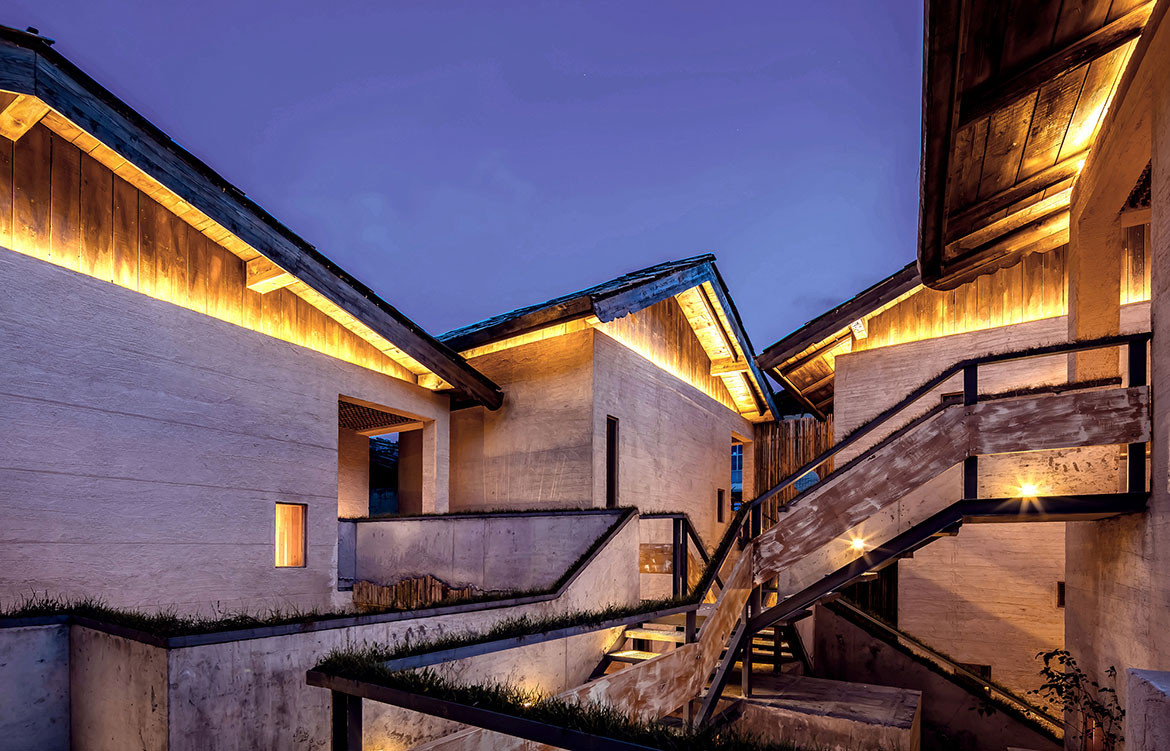There is a certain romance and mysticism to ancient towns and their solitary structures – particularly when these structures are as beautiful and labyrinthine as they are in the appropriately named Dukezong Ancient Town in Shangri-La, Yunnan, China. When creative director of Chinese firm Yiduan Shanghai Interior Design, Xu Xujun, met a man with a dream to turn the small, Tibetan-style buildings of this abandoned town into a hotel, the chance meeting proved to be a prosperous one – an opportunity to reimagine their faded glory as an undulating, geographically blessed retreat to be enjoyed anew.
The resulting hostel is called KARESANSUI, a name that was inspired by a poem from the Tang dynasty, Looking for the Reclusive Chan Taoist of South Stream by Liu Changqing. “Enjoy the green pines after the rain, walk by the path of the mountain and find the source of the water, I understand Zen from the reflection of the flowers in the stream, and I stare at them silently.”
Similarly, the design of the interwoven landscape of buildings is embedded with a manifested philosophy of Oriental zen. According to Xujun, the aim was to lead guests to spiritual pleasure and psychological satisfaction: “Being enlightened by the quiet stream, enjoying tranquility from appreciating a swaying wildflower,” she says. “What is deep inside the heart is a kind of peace and joy of self-examination. Such a kind of peaceful mood integrated harmoniously with the quiet environment.”
The spatial layout of the hostel – which is comprised of six small buildings and an old Tibetan house – is the most crucial element of the brief’s execution. The scale of KARESANSUI is not big, but there is a grandiosity to it by virtue of Xujun’s determination to make full use of the view, a spectacular mountainscape with a broad, rolling horizon. Each of the 15 guest rooms has access to a window that looks out onto the painterly scenery of sky, cloud, mountain and forest. The buildings themselves have been designed to blend into this landscape, mimicking its vast interconnectedness with bridging, open-air corridors and taking cues from its materiality in a natural, Tibetan-inspired material palette. Even the handrails along the footpaths that float between these wooden structures have been planted with grass, so that guests can feel as if they are running their hands along the earth while walking from their guest room to the restaurant, lobby or tea room.
KARESANSUI Hotel
karesansui-hotel.com
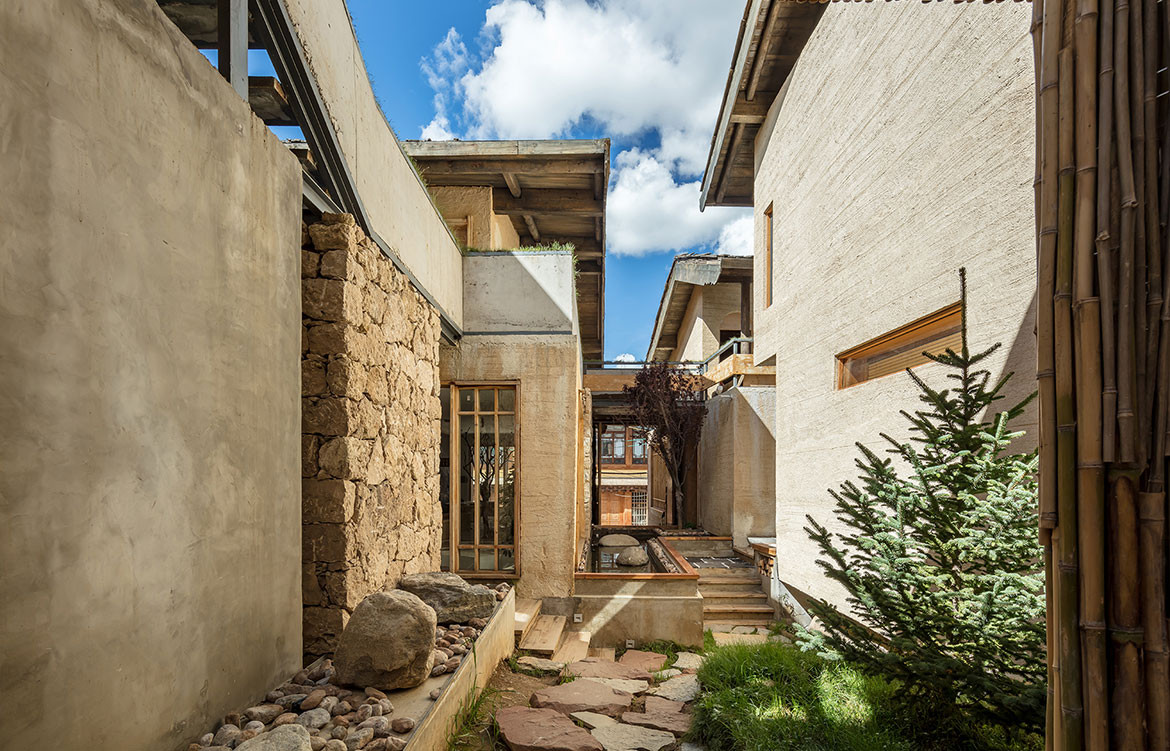





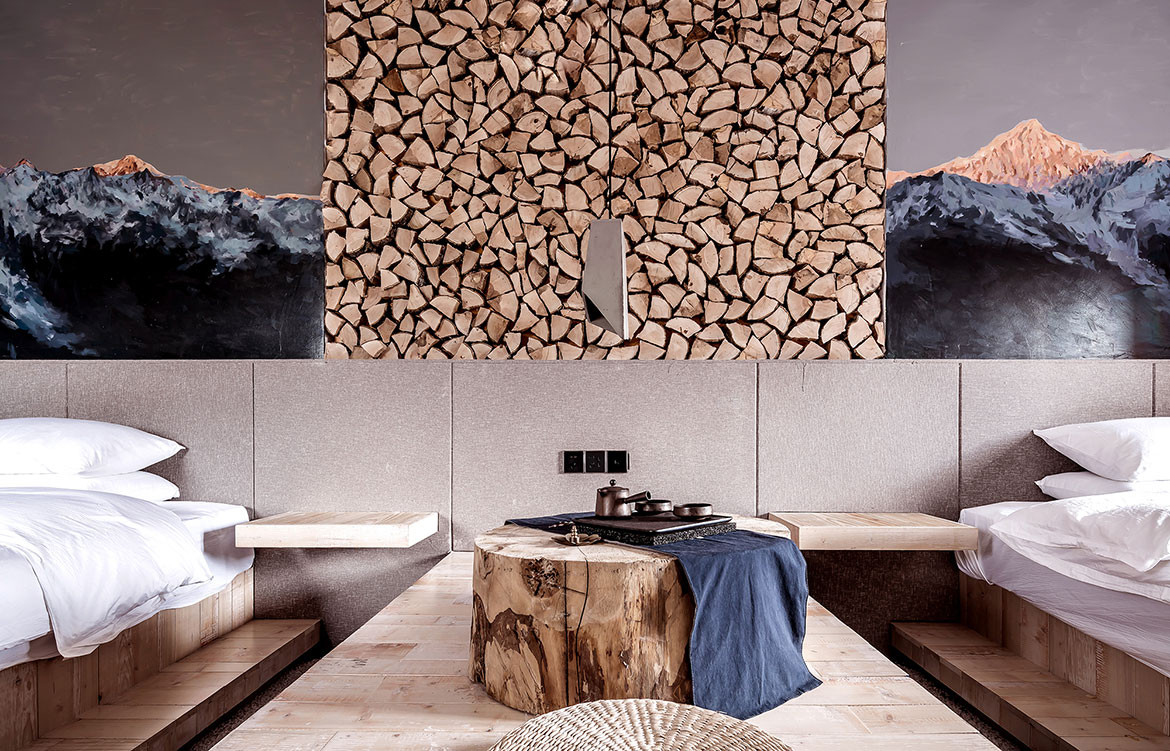
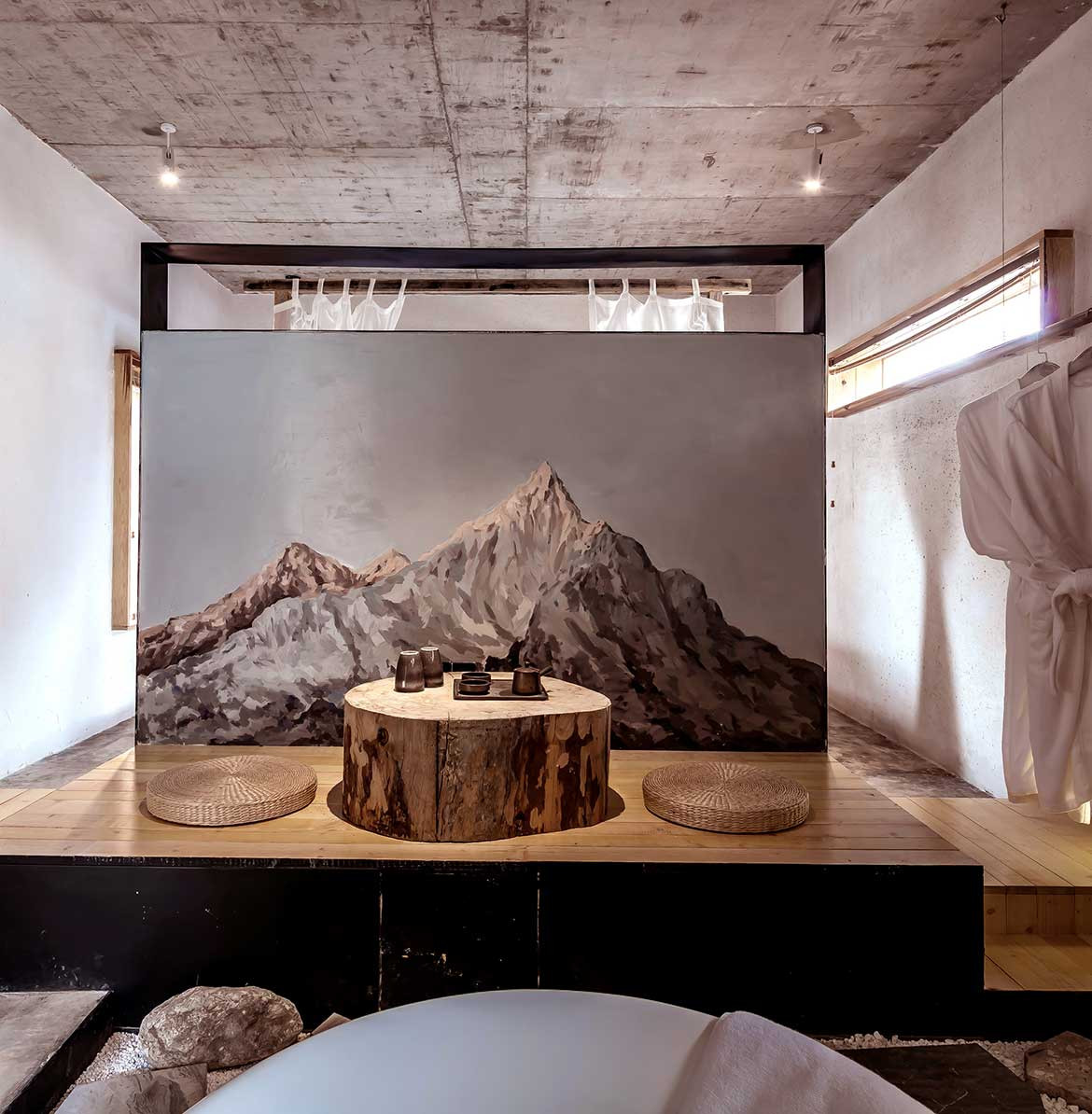
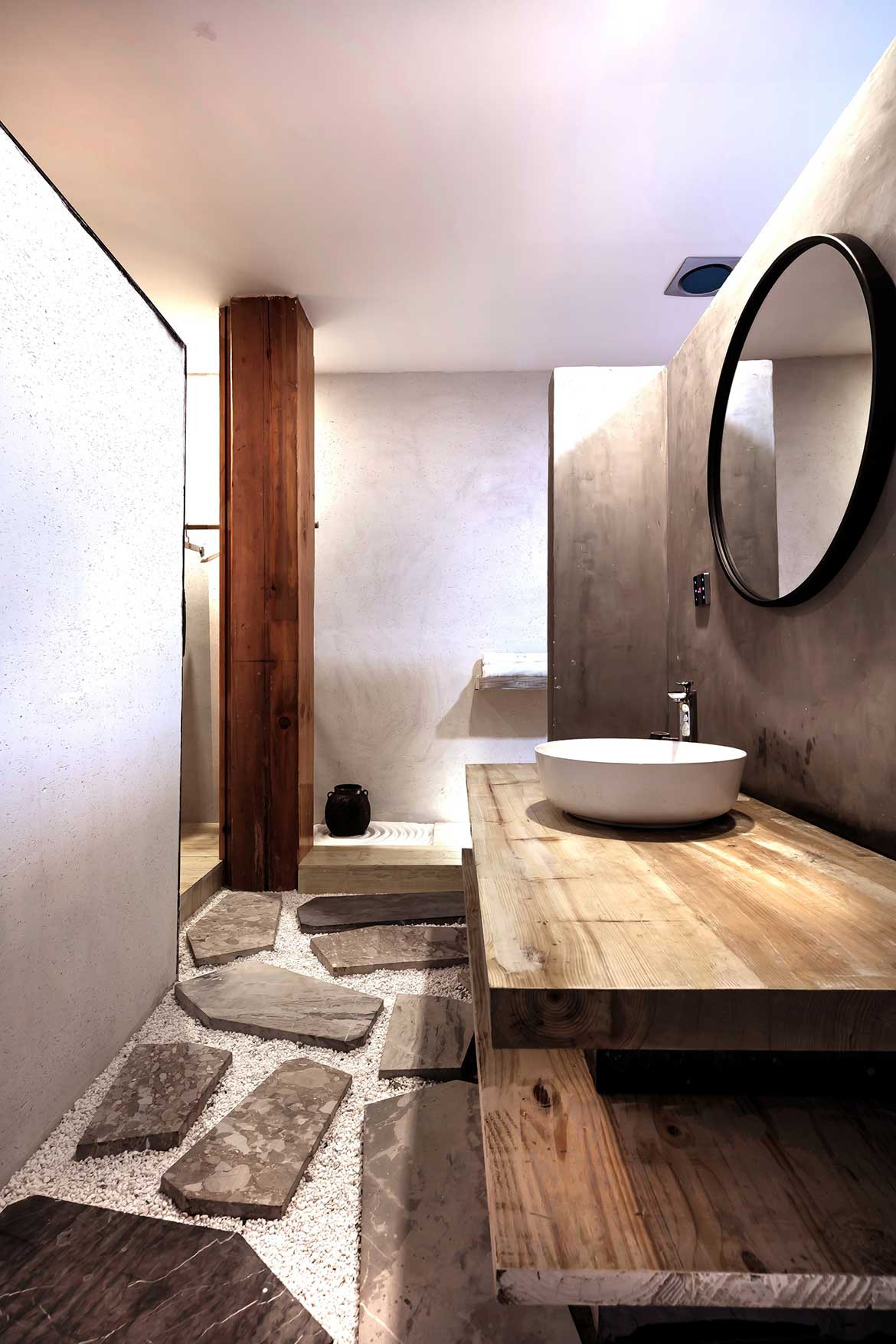
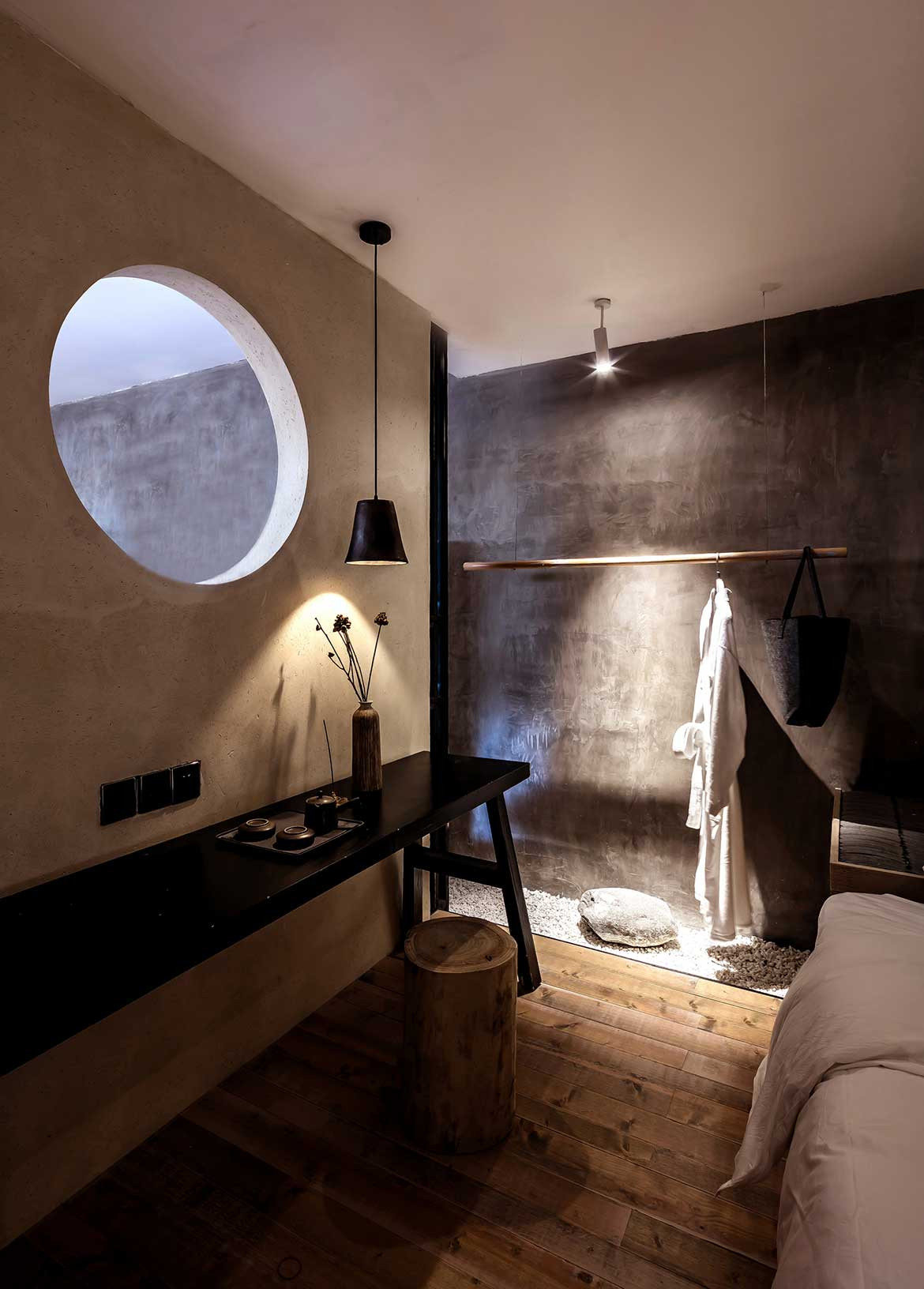

We think you might also like Tsingpu Yangzhou Retreat by Neri & Hu

